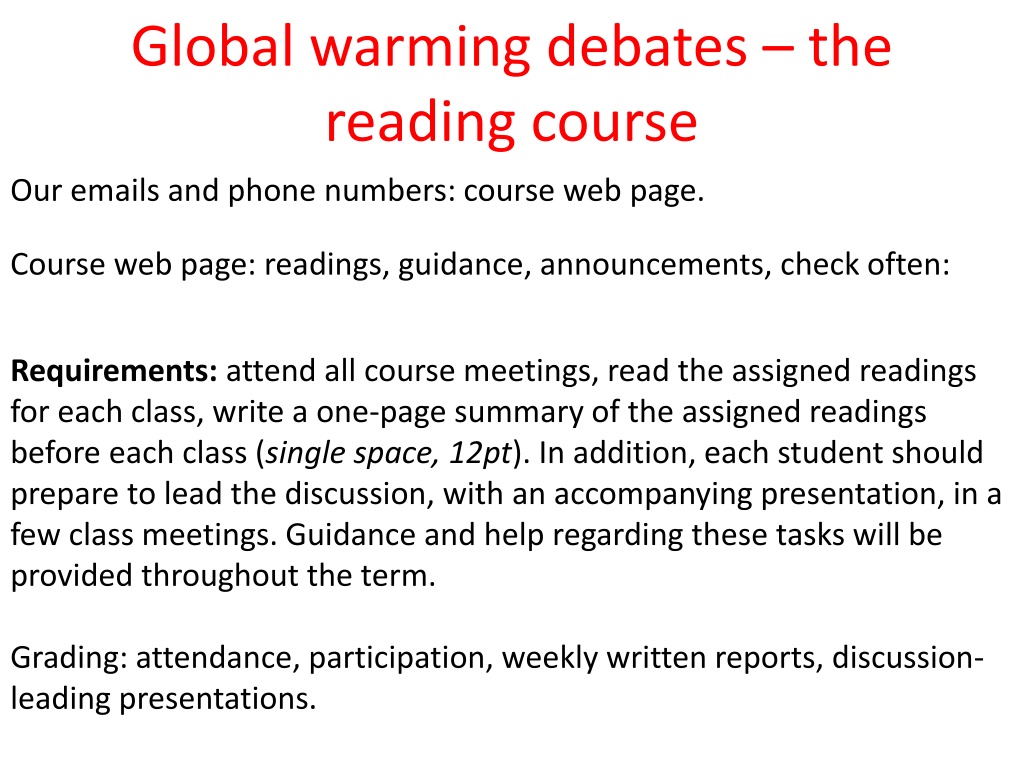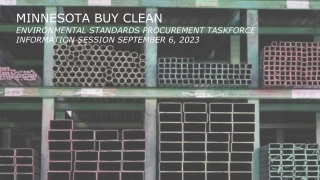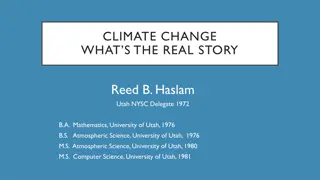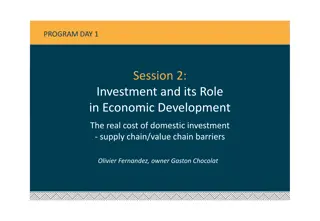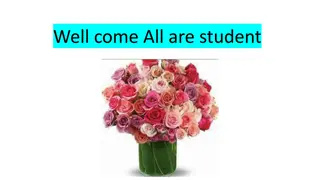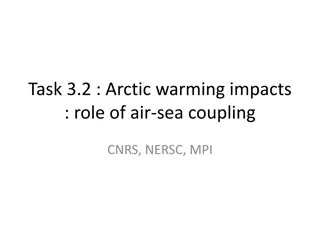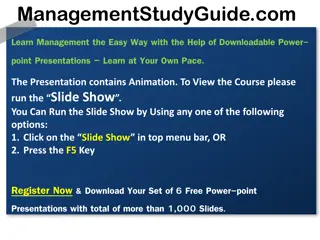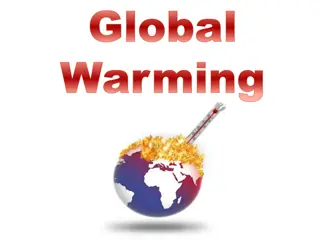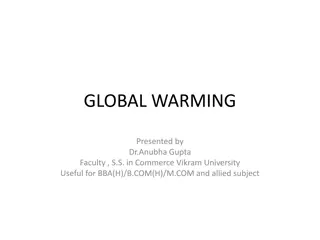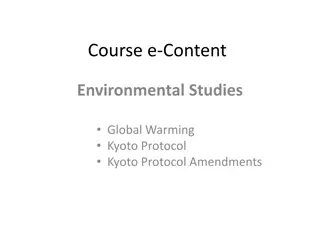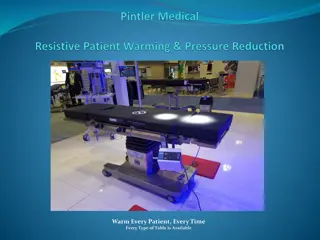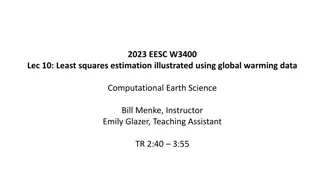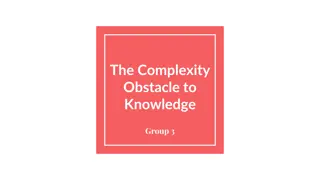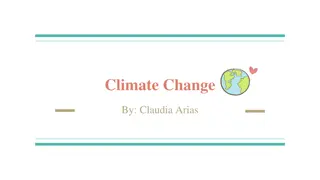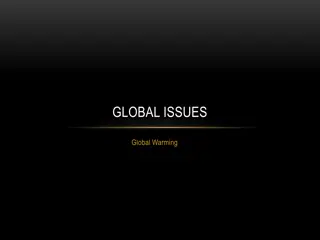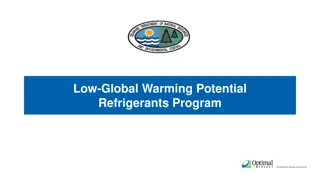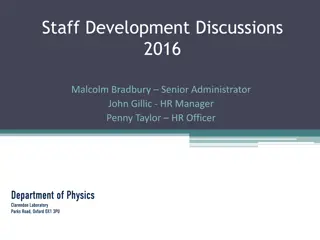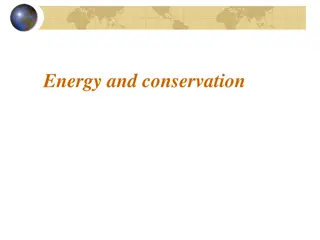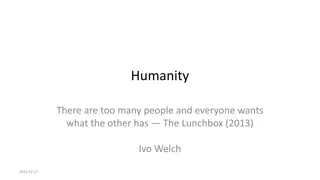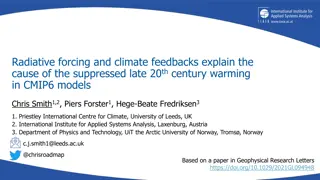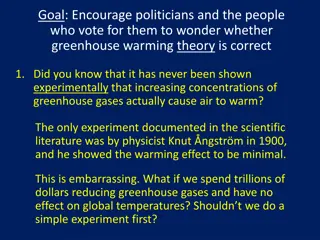Effective Strategies for Global Warming Course Discussions
Explore the requirements and guidelines for a global warming debates reading course, including attending all meetings, preparing written summaries, and leading discussions. Learn about the presentation and writing assignments focused on critically analyzing assigned readings. Guidelines for leading discussions and creating engaging presentations are detailed.
Download Presentation

Please find below an Image/Link to download the presentation.
The content on the website is provided AS IS for your information and personal use only. It may not be sold, licensed, or shared on other websites without obtaining consent from the author. Download presentation by click this link. If you encounter any issues during the download, it is possible that the publisher has removed the file from their server.
E N D
Presentation Transcript
Global warming debates the reading course Our emails and phone numbers: course web page. Course web page: readings, guidance, announcements, check often: Requirements: attend all course meetings, read the assigned readings for each class, write a one-page summary of the assigned readings before each class (single space, 12pt). In addition, each student should prepare to lead the discussion, with an accompanying presentation, in a few class meetings. Guidance and help regarding these tasks will be provided throughout the term. Grading: attendance, participation, weekly written reports, discussion- leading presentations.
Writing assignment Please write a one-page summary of the assigned readings (single space, 12pt), to be submitted via Canvas beginning of class. Please be concise and accurate. Discuss all assigned papers, summarizing the authors position, and the main facts on which it is based. Discuss the strengths and weaknesses of their observations, analysis and conclusions. Including but not limited to: invalid assumptions, inappropriate treatment of data, conclusions that are not well-based. Briefly compare and contrast the conclusions of the different reading materials. Conclude with a brief reasoned statement of your own position.
Presentation guidelines - discussion The purpose of the presentation is one to induce a discussion. As soon as a discussion develops, you have achieved your goal do not be concerned with completing your presentation, sit back and relax. Do not feel obliged to answer all questions, let others participate Slides: Start with a brief background/ motivation, not from assigned reading Show all figures from all assigned papers early in presentation good way to get a discussion going, because class is familiar with these. Font never below 24 points On each slide: title, graphics, explanation, brief take-home message. Discuss the weaknesses and strengths of the assigned papers Conclude with a summary of the debate as represented by the papers Alternate presenting in class every 1-2 slides, rather than mid-way About 30-35 slides. Avoid slides with text and no figures/ graphics (bullet point lists etc),
Example of a good slide: A descriptive title yellow: red: Black: caption, explaining exactly what s shown in the figure including both axes and all lines, etc A brief take home message. Everything on slide in 24 points or larger
Presentation guidelines: introduction The purpose of the 10-minute intro presentation is (1) introduce and motivate next week s discussion. (2) clarify difficult to understand issues in the reading material, to make it easier for the other students to understand the readings. Slides: Six slides, see guidelines for discussion presentation
Another course requirement: Snacks
A summary of the points made by The great global warming swindle
The great global warming swindle: 1/3 1. We are told that global warming is proved beyond any doubt lies! 2. I believe in global warming, but not that it s us or CO2 . 3. There were period with 10 times as much CO2, we should see the consequences in the geologic record 4. None of the major climate changes of the last 1000 years can be explained by CO2 5. The current warming is due to coming out of the little ice age (1600) 6. Medieval warm period (1200) was a time of prosperity 7. Most warming occurred in the early 20 century, before CO2 (11:30) 8. CO2forms only a very small part of the earth s atmosphere (ppm) 9. CO2 never drove climate in the past 10. Nothing special about current climate, Earth temp always changing 11. CO2 is a very minor greenhouse gas, much smaller than water vapor 12. mid-tropospheric warming expected in theory but not found in data warming happened at wrong time (early 20c) and place (surface)
The great global warming swindle: 2/3 1. Ice cores show that temperature leads CO2 by 800 years 2. Humans are a minute effect relative to the sun 3. Solar activity/ sun spots very strongly correlated with temperature 4. Sun affects cloud formation via the modulation of cosmic rays 5. In the 70s, experts warned of a global ice age coming soon 6. Climate models are based on hundreds of assumptions, all it takes is for one assumption to be wrong, and the forecast is useless 7. All models assume that CO2 is the main cause for climate change, rather than the sun or clouds. 8. Warming smaller EPTD less storminess, not more hurricanes 9. You can get anything with a model by tweaking a parameter 10. Models give wild speculation the appearance of respectable science
The great global warming swindle: 3/3 1. Sea level rises only because of warming, not melting, will take a very long time. 2. Tropical diseases (Malaria) wont spread northward: mosquitoes are not tropical. There were serious malaria breakouts in Russia. 3. Greenland was much warmer 1000 years ago, and did not melt 4. Permafrost under Russian forests melted much more 7000yrs ago 5. Ice in Antarctica always breaks off and melts, news only because of satellite data. Ice is always moving. Happens every spring.
The great global warming swindle: politics 1. There is no consensus among climate scientists 2. The IPCC and its final conclusions are political 3. Climate scientists needs [the] problem in order to get funding 4. Margaret Thatcher didn t trust mid-east oil&coal workers, promoted nuclear power, offered funding to global warming scientists 5. Environmentalists won all their battles, needed to remain revolutionary, therefore adopted global warming as a new agenda 6. Social activists needed new tool against capitalism, post communism 7. Lots of money poured into the research area, attracted people whose only interest was global warming 8. Principles of journalism abandoned because with no global warming environmental journalists will loose their jobs 9. IPCC reports distorted in a way inconsistent with peer review, without coauthor approval. 10. Global warming is a new religion opponents are viewed as heretics 11. Policies against global warming have a disastrous effect on the poor
The great global warming swindle: politics 1. Precautionary approach not looking at the dangers of acting against global warming: dangers of life without cheep electricity 2. If the rich developed world cannot afford expensive sustainable energy, neither can the developing world.
